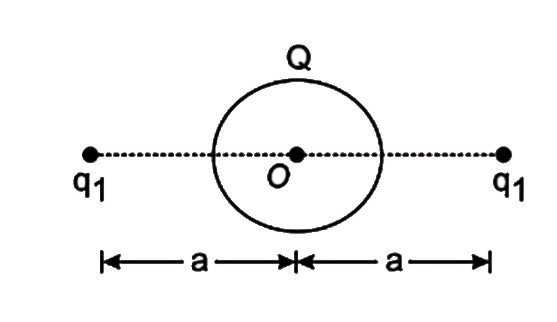In the given diagram find the position where the equivalent lens can be placed for image formation by rays takes place at same place as in the given diagram. Assume that all the curved surfaces have same radii and same optical axis for both the lenses.

2.5 cm from lens L1
3.0 cm from L1
7.5 cm from L1
10.0 cm from L1
The correct Answer is:A
Step by step video & image solution for In the given diagram find the position where the equivalent lens can be placed for image formation by rays takes place at same place as in the given diagram. Assume that all the curved surfaces have same radii and same optical axis for both the lenses. by Physics experts to help you in doubts & scoring excellent marks in Class 12 exams.
Updated on:21/07/2023Topper's Solved these Questions
- GEOMETRICAL OPTICSBOOK - AAKASH SERIESCHAPTER - GEOMETRICAL OPTICSEXERCISE - ADDITIONAL PRACTICE EXERCISE -I (LEVEL-II LECTURE SHEET (ADVANCED) MORE THAN ONE CORRECT TYPE QUESTIONS)
3 Videos
- GEOMETRICAL OPTICSBOOK - AAKASH SERIESCHAPTER - GEOMETRICAL OPTICSEXERCISE - ADDITIONAL PRACTICE EXERCISE -I (LEVEL-II LECTURE SHEET (ADVANCED) LINKED COMPREHENSION TYPE QUESTIONS)
8 Videos
- GEOMETRICAL OPTICSBOOK - AAKASH SERIESCHAPTER - GEOMETRICAL OPTICSEXERCISE - ADDITIONAL PRACTICE EXERCISE -I (LEVEL-I(MAIN) STRAIGHT OBJECTIVE TYPE QUESTIONS)
21 Videos
- ELEMENTS OF VECTORSBOOK - AAKASH SERIESCHAPTER - ELEMENTS OF VECTORSEXERCISE - QUESTIONS FOR DESCRIPTIVE ANSWERS
10 Videos
- LAWS OF MOTIONBOOK - AAKASH SERIESCHAPTER - LAWS OF MOTIONEXERCISE - PRACTICE EXERCISE
106 Videos
Similar Questions
Study the diagram given below and answer the questions that follow :

Name the structure where photosynthesis takes place
View SolutionIf radii of curvature of both convex surfaces is 20 cm, then focal length of the lens for an object placed in air in the given arrangement is

View SolutionDraw ray diagrams showing the image formation by a concave lens when an object is placed
(a) between focus and twice the focal length of the lens
(b) beyond twice the focal length of the lens
View SolutionAssertion:Although the surfaces of goggle lens are curved, It does not have any power.
Reason: In case of goggles, both the curved surfaces have equal radii of curvature and have centre of curvature on the same side.
View SolutionAssertion:Although the surfaces of goggle lens are curved, It does not have any power.
Reason: In case of goggles, both the curved surfaces have equal radii of curvature and have centre of curvature on the same side.
View SolutionA plano-convex lens P and a concavo-convex lens Q are in contact as shown in figure. The refractive index o fthe material of the lens P and Q is 1.8and1.2 respectively. The radius of curvature of the concave surface of the lens Q is double the radius of curvature of the convex surface. The convex surface of Q is silvered.

An object is placed on the placed on the principal axis at a distance 10cm form the plane surface. The image is formed at a distance 40cm from the plane surfaces on the same side. The focal length of the system is
View SolutionIn between two point charges a conducting spherical shell having charge Q is placed as shown in the diagram. Assuming all charges to be positive, mark out the correct statement.

View SolutionA point object is places on the principal axis of a thin lens with parallel curved boundaries, i.e., having same radii of curvature. Discuss about the position of the image formed.
View SolutionGiven figures shows the arrangement of two lenses. The radii of curvature of all the curved surfaces are same. The ratio of the equivalent focal length of combinations P,Q and R is:

View SolutionA cylinder of same height and radius is placed on the top of a hemisphere. Find the curved surface area of the shape if the length of the shape by 7cm.
View Solution
